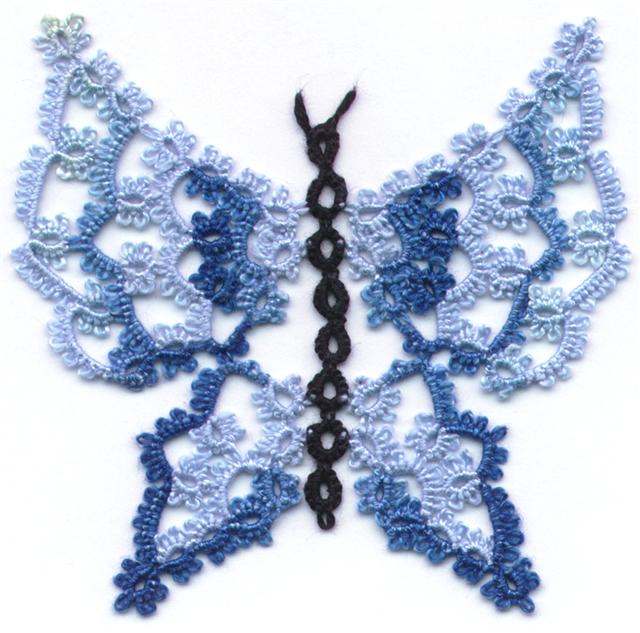So when I began designing I designated the pattern easy, takes concentration, or "throw the shuttles across the room". I've only ever designed 2 of the latter. I also mark the pattern to show which techniques they require. That way, a tatter knows at the outset what to expect. A catalog of these symbols and what they mean is printed at the front of each of my publications. I haven't included a description of what they mean in quite some time, so I've decided to put the information here, label it and then in future I can just refer to the label so that people don't have to wonder, "What do those odd symbols mean?".
Here's the symbols, or most of them.

The first one shouldn't be any surprise, it's an easy pattern. The second one means the pattern requires concentration; it's not a 'tat in front of the TV' design. The missing, "throw the shuttle across the room symbol is a 12 point star because you have to be a star to tat it, but I don't do many of those. That's the basic, easy to difficult symbols.
The next 2 symbols are ovoid shapes kind of like what a shuttle looks like. I guess it's no surprise that they mean there are shuttles in use. One symbol, one shuttle, 2 symbols, 2 shuttles, 3 symbols, 3 shuttles. (Yes you can occasionally use more than 2 shuttles.). The symbol beside it that kind of looks like a square with diagonal lines, also kind of looks like a ball of thread. That's because some patterns use a shuttle and ball of thread. I think it's better to know at the outset if you NEED a second shuttle, before you get in to the pattern and realize that things would have been much easier with 2 shuttles wound CTM. On the other hand, you can save a lot of precious HDT if you don't unnecessarily wind a second shuttle. Those are the, this is what I need to do this pattern symbols. If a pattern is easier to do with a double bobbin shuttle, the shuttle symbol will have 2 little circles on it.
The rest of the symbols refer to techniques. The circle with a line through it refers to split rings. Just like the ring is made part with one shuttle and part with the other. In earlier patterns I marked the ring with a line through it where the split occurred, but in later patterns I also shaded the section done with shuttle 2 as it seemed to help some people follow the pattern more easily.
Two parallel lines are just an indication of mock picots. Mock picots are such a non-entity. You make a picot but a mock picot just happens, If you do a row of split rings, you can't, NOT make mock picots. They're just a by product of doing the last thing and the next thing, but again it helps some people to know that they are there.
The figure 8 on it's side, aka the symbol for infinity, represents working CTM because like infinity, there aren't any ends.
The last symbol of linked chains is a symbol I use for split chains. In the pattern itself I show the chain with two arrows facing each other at the point where the chain is split. That shows the tatter to work the first part of the chain up to the arrowhead and then work the second part of the chain from the opposite direction back to meet it.
If there is cluny tatting I show a cluny leaf shape with lines across it. In the pattern I show the same symbol where the cluny appears with the number of wraps superimposed.
It's really all very logical and it helps users to know what they are getting into and to follow the pattern more easily. Doing a newsletter for 6 years and getting a lot of good feedback, has helped my develop better drawings that are easier to follow.
Now that I have explained my little legend, I've also gone through the blog and tagged all of the patterns. Just clicking on the Pattern tag should bring up all of the designs available on the blog.


2 comments:
What a wonderful way to let tatters know about the pattern requirements!
I had wondered about some of the symbols. Thanks for sharing! Even without knowing what ALL of them were, I still find your patterns easy to read.. That is, after I stumble through them a few times.
Love the patterns you have already posted! And again, thank-you for letting us know what your symbols are! ^^
Post a Comment